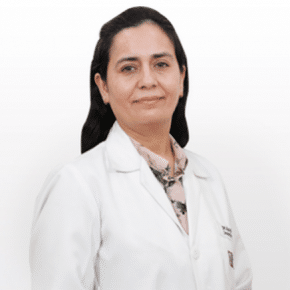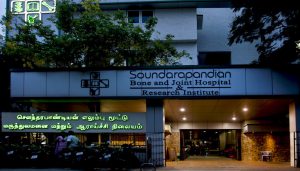Ankylosing Spondylitis
Ankylosing spondylitis as it should be rightly termed is a form of arthritis that mainly affects the spine. It leads to severe inflammation of the vertebrae, which may eventually lead to chronic pain and disability. In advanced cases, the inflammation can lead to the formation of new bone on the spine; which may lead to […] Read More
Top Doctors For Ankylosing Spondylitis Treatments
Top Hospitals For Ankylosing Spondylitis Treatments
Ankylosing Spondylitis
- A physical examination.
- Review of medical history.
- Blood tests; such as erythrocyte sedimentation rate may be carried out to measure the presence of inflammation. Also, a blood test to detect the HLA-B27 protein may be carried out.
- An X-ray or an MRI scan.
- Non-steroidal anti-inflammatory drugs (NSAIDs) and corticosteroids, like ibuprofen and naproxen, can be prescribed to help manage pain and inflammation.
- Tumor necrosis factor (TNF) inhibitors block inflammation triggers in the body.
- Disease-modifying anti-rheumatic drugs (DMARDs) slow the progression process of the disease in the body, in order to prevent worsening of symptoms. It is usually prescribed in severe cases.
Symptoms
Ankylosing spondylitis symptoms in the early stages include;
- Pain and stiffness in the lower back and hips, particularly in the morning, and after some periods of being inactive.
- Neck pain and fatigue.
Other symptoms include;
- Poor posture or deformed shoulders.
- Loss of appetite.
- Low grade fever.
- Weight loss.
- Fatigue.
- Anaemia or low iron.
- Reduced lung function.
- Bowel inflammation.
- Mild eye inflammation.
- Heart valve inflammation.
- Achilles tendonitis.
- Trouble with taking deep breaths.
Causes
The specific cause of ankylosing spondylitis is yet to be detected. Although, genetic factors have been fingered to be involved; especially people who possess the gene that produces a protein known as HLA-B27. This gene greatly increases the risk of developing ankylosing spondylitis. It is believed that the gene tells the immune system to attack some common bacteria in the body; this sets off ankylosing spondylitis symptoms. However, it is not everyone who possesses this gene that ends up developing ankylosing spondylitis. In fact, only a few people with it do.
It is also believed to run in families, and those with parents or siblings that have ankylosing spondylitis, are 10 to 20 times more likely to develop it than those with no family history.
FAQ
Are there any risk factors of spondylitis?
Sex: Men are at an increased risk of developing ankylosing spondylitis than women.
Age: Onset is in late adolescence or early adulthood; about 80% of cases start before age 30 and 95% by age 45.
Heredity: The HLA-B27 gene is usually found in most people with ankylosing spondylitis.
Ethnicity: This is a more common condition in people of Caucasian descent.
What are the complications of spondylitis?
Some possible complications are;
- Fusion of vertebrae due to chronic inflammation.
- Inflammation of nearby joints; like the hips and shoulders.
- Inflammation of the ligaments and tendons, which may worsen flexibility.
- Difficulty in breathing.
- Eye irritation; like uveitis.
- Heart, lung and/or bowel damage.
- Compression fractures of the spine.
- Tiredness.
- Osteoporosis.
- Gastrointestinal disorders.
Are there any lifestyle and home remedies of spondylitis?
There are a couple of things that can be done on daily basis to help feel better.
- Regular and daily exercise.
- Keep a healthy weight; this helps ease stress on the joints.
- Consume diet high in omega-3 fatty acids.
- Don’t smoke; quit if you do.
- Heat up stiff joints and tight muscles, and ice packs on inflamed areas.
How can I prevent spondylitis?
There are chances that ankylosing spondylitis may be prevented by
- Staying as active as possible.
- Eating a healthy and balanced diet.
- Maintaining a normal body and healthy weight.































































